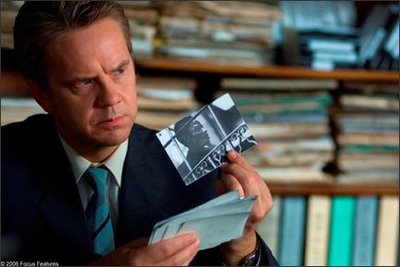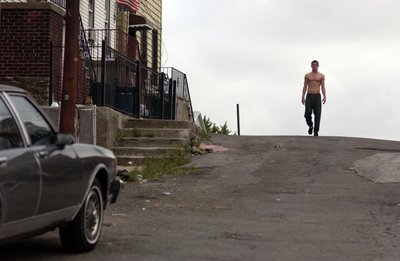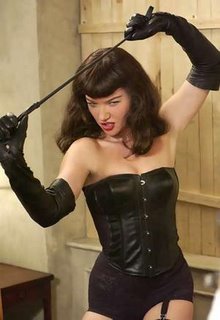 Melvil Poupaud, Marie Rivière & Daniel Duval, Time to Leave (Dendy Films)
Melvil Poupaud, Marie Rivière & Daniel Duval, Time to Leave (Dendy Films)Francois Ozon is one of my favourite French directors. His artistic renditions of human drama contribute significantly to what makes French films so worth seeing. This is his second instalment of a trilogy about death that started with the emotionally enthralling and understated Under The Sand.
Previously he has covered different genres like comedy (8 Women) and thriller (Swimming Pool). While these films have found a wider audience, I find the dramatically subdued exploration of grief and mortality in Under The Sand and Time To Leave much more interesting and satisfying.
Ozon typically uses a female lead in his films. In Time To Leave he uses a male protagonist, Romain (Melvil Poupaud). He appears to be selfish and egocentric – not overly likeable. Romain is approaching imminent death and finds his own way to deal with it. It is revealing to observe how he interacts with people and attempts closure on his ‘final journey’.
The film has a bit of a wandering Zen feel about it. There is no sentimentality and Romain does not burden anyone. It appears that he wants to tidy up loose ends before his passing in an attempt to find peace within himself.
Legendary actress Jeanne Moreau, playing the grandmother, has as strong a screen presence as ever (55 years after her debut). It is only with her that Romain seems to open up emotionally, and we get a glimpse of his warmer side. These scenes were very moving and felt like the emotional core of the film.
Like Under The Sand, Time To Leave doesn’t seem to be making any particular point. It doesn’t proselytise a world view. Nor is it gratuitous, contrived or flamboyant. It is like an essay on the human condition, with great artistry and compassion. There is such understated confidence, intelligence and skill in Ozon’s direction. Highly recommended.
Dir, Scr: François Ozon Rating: MA Duration: 85 min Genre: drama Language: French Country: France Release: 30/11/06, limited Dist: Dendy Films Prod Co: Fidélité Prod: Olivier Delbosc, Marc Missonnier Sound Des: Brigitte Taillandier, Aymeric Devoldère Phot: Jeanne Lapoirie Ed: Monica Coleman Prod Des: Katia Wyszkop Cast: Melvil Poupaud, Jeanne Moreau, Valeria Bruni-Tedeschi, Daniel Duval, Marie Rivière
Official website IMDB













